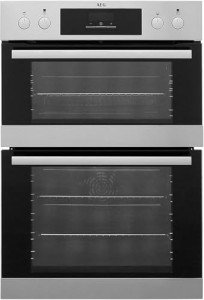10 Easy Steps To Start The Business You Want To Start Build In Oven Business
The Ultimate Guide to Built-in Ovens: Enhancing Your Kitchen Experience
Built-in ovens have actually become a popular choice in contemporary kitchens, offering a blend of performance, style, and convenience. Unlike traditional freestanding ovens, built-in ovens are integrated seamlessly into kitchen cabinetry, offering a streamlined appearance that can improve the aesthetic appeal of any kitchen. This article checks out the different kinds of built-in ovens, their advantages, installation factors to consider, and maintenance pointers.
Comprehending Built-in Ovens
Built-in ovens are designed to be set up straight into kitchen cabinets, permitting a more personalized kitchen setup. They generally are available in 2 main types: single and double ovens.
Types of Built-in Ovens
Single Ovens: These systems use one cooking compartment, ideal for smaller cooking areas or homes where cooking needs are modest.
Double Ovens: As the name recommends, these units feature 2 separate cooking compartments, allowing users to prepare numerous dishes at various temperature levels all at once. This is especially helpful for large households or those who frequently amuse guests.
Steam Ovens: These ovens cook food using steam, which can help retain wetness and nutrients. Steam ovens are getting appeal due to their health advantages.
Mix Ovens: These versatile appliances integrate the functions of a regular oven and a microwave, making them ideal for quick cooking and reheating.
Secret Features to Look For
When considering a built-in oven, there are numerous functions that can boost your cooking experience:
Smart Technology: Many contemporary built-in ovens come equipped with clever innovation, enabling users to manage their oven remotely via mobile phone apps. Features consist of preheating the oven, changing cooking times, and keeping an eye on cooking development.
Self-Cleaning Functions: Built-in ovens with self-cleaning abilities can conserve time and effort in kitchen upkeep.
Convection Heating: This feature circulates hot air for even cooking, making it perfect for baking.
Security Features: Look for designs equipped with functions like cool-to-the-touch oven doors and automated shut-off choices for included security.
Benefits of Built-in Ovens
Visual Appeal: Built-in ovens offer a streamlined and modern-day look that can enhance the overall style of a kitchen. They can be integrated into cabinets, making them less invasive than freestanding designs.
Space Efficiency: Built-in ovens enhance kitchen space, particularly in smaller sized kitchens where every inch counts. They can be put at eye level, making it easier to keep an eye on cooking without flexing down.
Improved Functionality: With their advanced functions, built-in ovens use enhanced cooking experiences and increased performance compared to conventional ovens.
Setup Considerations
Installing a built-in oven requires careful preparation and consideration. Here are some bottom lines to bear in mind:
Space Requirements: Ensure that the selected oven fits snugly into the available cabinet space. Measure read this post here , representing ventilation and clearance requirements.
Electrical Requirements: Built-in ovens usually need a devoted electrical circuit. Seek advice from an electrical expert for correct installation.
Ventilation: Proper ventilation is important for optimal oven performance. Validate that the setup location has adequate ventilation to prevent getting too hot and make sure safe operation.
Professional Installation: While DIY setup may appear appealing, enlisting the aid of an expert can guarantee that the oven is installed properly and safely.
Installation Steps
Setup Step
Description
Step 1: Measure
Step the cabinet opening for your oven.
Step 2: Prepare
Prepare the electrical outlet and ventilation options.
Action 3: Connect
Link the oven to power, making sure all security measures are followed.
Step 4: Secure
Protect the oven within the cabinetry, utilizing appropriate screws and brackets.
Step 5: Test
Run a test to guarantee the oven is functioning effectively.
Upkeep Tips
Regular maintenance can extend the life of your built-in oven and make sure optimal performance. Here are some upkeep tips:
Clean Regularly: Wipe down the oven outside and clean the interior regularly. Usage self-cleaning functions where available.
Inspect Seals: Ensure that door seals are intact to preserve efficiency and cooking performance.
Display Performance: Pay attention to how your oven functions— if you observe unequal cooking or unusual sounds, it may need expert servicing.
Follow Manufacturer Guidelines: Always stick to the upkeep standards supplied by the maker. This can assist prevent problems and ensure that guarantees stay valid.
FAQs about Built-in Ovens
What is the distinction in between a built-in oven and a freestanding oven?
- Built-in ovens are integrated into kitchen cabinetry, offering a structured appearance, while freestanding ovens are standalone appliances that can be positioned throughout the kitchen.
Do built-in ovens require more upkeep than routine ovens?
- Not always. Upkeep depends on use and cleaning practices more than the type of oven. Regular care is vital for all ovens.
Can I install a built-in oven myself?
- While it is possible to set up a built-in oven yourself, it is suggested to hire an expert to make sure safe and accurate installation, especially regarding electrical requirements.
What are the typical costs of built-in ovens?
- Costs can differ substantially based upon brand name, features, and specs. Standard models might start around ₤ 800, while high-end models can go beyond ₤ 3,000.
Are built-in ovens energy-efficient?
- Numerous contemporary built-in ovens are developed to be energy-efficient. Try to find designs with an ENERGY STAR accreditation for the best performance.
In conclusion, built-in ovens are an outstanding addition to any modern-day kitchen, combining aesthetic appeals with functionality. By comprehending the various kinds of built-in ovens, their features, and the associated installation and upkeep requirements, homeowners can make an informed choice that boosts their cooking experience and general kitchen design. As cooking technology evolves, built-in ovens are likely to play an integral function in the future of home cooking areas, guaranteeing delicious meals are prepared with ease and benefit.
